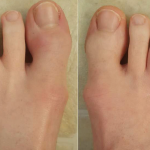NEW YORK (Reuters Health)—Risankizumab, an inhibitor of interleukin (IL) 23, provides some relief for patients with active psoriatic arthritis (PsA) whose symptoms have responded poorly to standard treatments, according to 24-week results of a phase-3 trial.
“Despite the range of available therapies for psoriatic arthritis, efficacious, well-tolerated therapeutic options are needed to treat the diverse disease manifestations in patients who have not responded adequately to standard treatment,” Dr. Lars Erik Kristensen of the University of Copenhagen and colleagues write in BMJ Annals of the Rheumatic Diseases.1
Current first-line treatments for PsA include non-steroidal anti-inflammatory drugs, local corticosteroid injections for musculoskeletal symptoms and topical therapies for psoriasis. For patients with an inadequate response or poor prognosis, conventional synthetic disease-modifying anti-rheumatic drugs (csDMARDs), antitumor necrosis factor therapy and other biologics are recommended.
Risankizumab, a humanized IgG1 monoclonal antibody that specifically targets IL-23’s p19 subunit, has been approved by the U.S. Food and Drug Administration as a treatment for moderate to severe plaque psoriasis, but not PsA.
“I really welcome a new mode of action, which we will have to learn how to optimally use in PsA patients,” Dr. Kristensen tells Reuters Health by email. “We have patients with PsA who do not respond or tolerate the drugs we had so far for treating this.”
In the double-blind KEEPsAKE 1, Dr. Kristensen and his colleagues randomly assigned 964 patients with active PsA to receive 150 mg of risankizumab or placebo at zero, four and 16 weeks. The primary endpoint was the proportion of patients whose symptoms improved by 20% or more based on the ACR20 criteria at week 24.
All patients were adults whose PsA symptoms had lasted at least six months, in accordance with the Classification Criteria for Psoriatic Arthritis. They had five or more tender joints; five or more swollen joints; one or more cases of erosion based on a centrally read radiograph (hands, feet or both) or high-sensitivity C-reactive protein (at least 3.0 mg/L); and active plaque psoriasis, defined as at least one psoriatic plaque of 2 cm or more in diameter or nail psoriasis.
The participants had previously had an inadequate response, intolerance, or a likely risk of harm from one or more csDMARDs. Continuation of concomitant therapy with two or fewer csDMARDs was allowed, but patients with prior exposure to biologics were excluded. The percentage of patients undergoing concomitant csDMARD treatment was similar between the risankizumab and placebo groups (76.0% vs. 76.7%, respectively).
At the 24-week mark, 57.3% of patients receiving risankizumab achieved ACR20, compared with 33.5% of patients on placebo (P<0.001).
Eight of the study’s secondary endpoints also showed significant improvement, including skin (PASI 90) and nail (mNAPSI and PGA-F) psoriasis endpoints, minimal disease activity, and resolution of enthesitis and dactylitis (P<0.001).
For patients with greater than 3% of their body surface area impacted by psoriasis at baseline, a significantly greater proportion of patients achieved PASI 90 alleviation of symptoms with risankizumab versus placebo (52.3% vs. 9.9%; P<0.001).
Risankizumab also produces significant improvements in ACR50 (33.4% vs. 11.3%) and ARC70 (15.3% vs. 4.7%).
Dr. Kristian Reich, who studies inflammatory skin diseases at University Medical Center Hamburg-Eppendorf, in Germany, and was not involved in the study, says ACR50 would be a preferable treatment goal over ARC20. Risankizumab is currently “miles away” from that goal, he tells Reuters Health by email.
“In principle, the paper shows disappointing results clearly indicating that TNF and IL-17 inhibitors but not IL-12/23 or IL-23 inhibitors are the main therapies in PsA,” says Dr. Reich.
“We want to overcome the toxicity of cDMARDs by using more powerful and safer biologics and not having to combine biologics with cDMARDS because alone they do not work well enough,” he says.
Citing a full year of data (52 weeks) from a second KEEPsAKE trial, however, Dr. Kristensen noted that risankizumab’s mode of action – which is immune-modulating, rather than immune-effector inhibiting—may lead to further improved symptoms with longer use.
“I really believe that the interesting data is long-term data with this mode of action,” that is, p19 inhibition, Dr. Kristensen says. “Risankizumab responds gradually over time instead of climbing to a rapid but clamped response.”
The biopharmaceutical company AbbVie, which manufactures and markets risankizumab under the trade name Skyrizi, funded and participated in the design of the two KEEPsAKE trials. Dr. Kristensen has financial ties to the company.
Reference
- Kristensen LE, Keiserman M, Papp K, et al. Efficacy and safety of risankizumab for active psoriatic arthritis: 24-week results from the randomised, double-blind, phase 3 KEEPsAKE 1 trial. 2022 Feb;81(2):225–231. Epub 2021 Dec 15.



